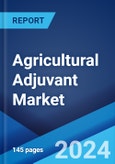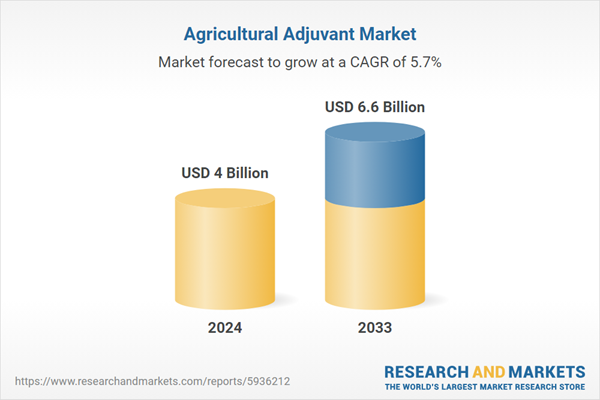Agricultural adjuvant plays a crucial role in modern farming practices by enhancing the effectiveness and efficiency of agricultural inputs. It is designed to be mixed with pesticides, herbicides, fungicides, or fertilizers to improve their performance and optimize their application. It modifies the properties of spray solutions, allowing for better coverage and penetration of the target plants. It can reduce the surface tension of the spray droplets, leading to improved wetting and spreading on the plant surface. Adjuvants can also enhance the adhesion of the spray to the leaf surface, preventing runoff and increasing the uptake of active ingredients. It also helps to overcome environmental factors such as temperature and humidity variations that may affect the efficacy of agricultural inputs. It can improve the stability and compatibility of spray solutions, reducing the risk of degradation or separation. Farmers can achieve more effective pest control, weed management, disease prevention, and nutrient delivery using agricultural adjuvants. This can result in higher crop yields, improved quality, and increased productivity.
The global market is majorly driven by the increasing demand for food. In line with this, the rapid technological advancements in adjuvant formulations are significantly contributing to the market. Furthermore, the worldwide regulations promoting sustainable agriculture are positively influencing the market. Apart from this, the growing awareness about crop protection is offering numerous growth opportunities in the market. Moreover, the escalating adoption of no-till and minimum-tillage practices is catalyzing the market. Besides, the rising incidence of pesticide resistance is fostering the market. Additionally, the organic farming sector is witnessing substantial growth as consumers increasingly prefer organic products. Adjuvants formulated for organic farming, such as organic surfactants and adjuvant oils, are gaining widespread popularity among the masses, thus supporting the market expansion.
Agricultural Adjuvant Market Trends/Drivers
Increasing shift toward sustainable agriculture
The increasing shift towards sustainable agriculture is significantly contributing to the market. With a growing emphasis on environmentally friendly and socially responsible farming practices, farmers are seeking adjuvants that align with sustainable agricultural principles. Adjuvants that facilitate reduced chemical usage, minimize environmental impact, and improve resource efficiency are in high demand. These adjuvants support the goals of sustainable agriculture by optimizing the effectiveness of agrochemical applications, reducing runoff and environmental contamination, and improving targeted pest and weed control. Furthermore, adopting sustainable farming practices, such as organic farming and integrated pest management, requires effective adjuvants compatible with these systems. Adjuvants formulated specifically for organic farming or those that enable reduced chemical inputs drive market growth. As the agricultural industry continues to prioritize sustainability, the demand for adjuvants that contribute to sustainable farming practices will continue to rise, thus stimulating the growth of the market.Rising investments in agricultural research and development (R&D)
The rising investments in agricultural research and development (R&D) are favorably impacting the market. These investments are leading to the development of innovative adjuvant formulations with improved functionalities and performance. Through extensive R&D efforts, new adjuvants are being created that offer enhanced compatibility, stability, and efficiency in agrochemical applications. Advanced formulations address farmers' challenges, such as increasing pesticide resistance and the need for reduced chemical inputs. Furthermore, investments in agricultural R&D also contribute to the development of adjuvants that align with emerging trends, such as precision agriculture and sustainable farming practices. These adjuvants cater to the demands of modern agriculture by optimizing the effectiveness of agrochemicals, reducing environmental impact, and promoting resource efficiency. As investments in agricultural R&D continue to grow, the development of innovative adjuvant solutions will accelerate, driving market growth and ensuring that farmers have access to the latest advancements in agricultural technology.The rapid adoption of precision agriculture techniques
The rapid adoption of precision agriculture techniques is strengthening the market. Precision agriculture utilizes advanced technologies, such as GPS, sensors, and drones, to enable site-specific farming and tailored crop management. Adjuvants play a crucial role in precision agriculture by enhancing the performance and efficiency of agrochemical applications. They aid in accurate delivery and targeted deposition of pesticides, herbicides, and fertilizers, maximizing their effectiveness and minimizing wastage. Furthermore, precision agriculture allows farmers to optimize their resource allocation, reduce input costs, and minimize environmental impact. Adjuvants that support precision agriculture practices, such as improving spray coverage, reducing drift, and enhancing adhesion, are in high demand. As the adoption of precision agriculture continues to expand, the need for adjuvants that enable precise and efficient agrochemical applications will drive market growth. These adjuvants contribute to maximizing crop yields, improving resource management, and supporting sustainable farming practices in the era of precision agriculture.Agricultural Adjuvant Industry Segmentation
This report provides an analysis of the key trends in each segment of the global agricultural adjuvant market, along with forecasts at the global and regional levels from 2025-2033. The market has been categorized based on type, crop type, and application.Breakup by Type
Agricultural Adjuvant Market
- Activator Adjuvant
- Utility Adjuvant
The report has provided a detailed breakup and analysis of the market based on type. This includes activator adjuvant and utility adjuvant. According to the report, activator adjuvant represented the largest segment.
Activator adjuvants, penetrants, or wetting agents are specifically designed to enhance the performance of pesticides and herbicides by improving their spreadability, coverage, and absorption. They are widely used to ensure optimal crop protection and weed control. They reduce the surface tension of spray solutions, allowing for better wetting and spreading on the target plant surface. This enables improved pesticide penetration, leading to enhanced efficacy in controlling pests and diseases.
Furthermore, farmers and agricultural professionals recognize the importance of activator adjuvants in maximizing the effectiveness of agrochemical applications. These adjuvants contribute to better overall crop management, including improved coverage on plant surfaces, enhanced absorption of active ingredients, and increased target specificity. Given the significant role, activator adjuvants play in modern agricultural practices, their dominance in the market is driving the overall growth of the adjuvant agriculture sector. As the demand for effective crop protection solutions continues to rise, activator adjuvants will remain essential components, supporting sustainable and efficient farming systems.
Breakup by Crop Type
- Cereals & Oilseeds
- Fruits & Vegetables
- Others
Cereals and oilseeds represent a significant segment of the agriculture industry, with high demand for effective crop protection and nutrient management solutions. Adjuvants tailored for cereals and oilseeds help optimize pesticide applications, improve coverage, and enhance absorption, thereby driving market growth in this segment.
Furthermore, fruits and vegetables are another important crop category that requires specialized adjuvants. These crops often face unique challenges, such as delicate plant structures, disease susceptibility, and strict residue regulations. Adjuvants formulated for fruits and vegetables aid in precise and effective pest control, disease management, and residue reduction, thus fueling market growth in this segment.
Breakup by Application
- Herbicides
- Fungicides
- Insecticides
- Others
A detailed breakup and analysis of the market based on the application have also been provided in the report. This includes herbicides, fungicides, insecticides, and others. According to the report, herbicides accounted for the largest market share.
Herbicides are widely used in agriculture to control weeds and ensure optimal crop growth. Adjuvants play a crucial role in enhancing the performance of herbicides, making them more effective in weed management. Furthermore, using adjuvants in conjunction with herbicides improves the spreadability, wetting, and absorption of the active ingredients on the target plants. They help overcome the challenges of weed resistance, increase the coverage of herbicide sprays, and enhance the adherence of herbicides to plant surfaces.
With increasing concerns about weed management and the need for effective solutions, the demand for adjuvants in the herbicides segment continues to grow. Adjuvants aid in improving the efficacy and efficiency of herbicides, ensuring better weed control and reducing the risk of crop yield losses. As herbicides remain the largest segment in the agriculture adjuvant market, the continued demand for adjuvants in herbicide applications fuels the overall growth of the market. Adjuvants enable farmers to achieve better weed management outcomes, leading to improved crop yields and increased productivity in the agricultural sector.
Breakup by Region
Agricultural Adjuvant Market
- North America
- Europe
- Asia Pacific
- Latin America
- Middle East and Africa
The report has also provided a comprehensive analysis of all the major regional markets, which include North America, Europe, Asia Pacific, Latin America, and Middle East and Africa. Amongst these, Asia Pacific is the leading market, accounting for the majority of the global share.
Asia Pacific is home to a significant agricultural industry, with a large and diverse range of crops cultivated in the region. The region's extensive agricultural activities, including the production of cereals, oilseeds, fruits, vegetables, and other crops, drive the demand for effective crop protection and management solutions, including adjuvants.
Furthermore, the rapid population growth and changing dietary preferences in the Asia Pacific have increased food production demand. This necessitates higher agricultural productivity and efficiency, thereby driving the adoption of adjuvants to optimize crop yields and protect against pests and diseases.
Moreover, the growing awareness about sustainable agricultural practices and the need to minimize environmental impact in the Asia Pacific have fueled the demand for adjuvants that support eco-friendly and responsible farming practices. Adjuvants that enhance the efficacy of agrochemicals while reducing their environmental footprint are in high demand in the region. Additionally, the presence of a strong manufacturing base for agrochemicals contributes to the availability and accessibility of adjuvants, supporting the market growth.
Competitive Landscape
Top agricultural adjuvant companies are significantly propelling the market through their innovative product offerings, extensive research and development efforts, and strategic partnerships. These companies invest heavily in developing advanced adjuvant formulations that cater to the evolving needs of farmers and the agricultural industry. Through their R&D initiatives, these companies focus on improving the compatibility, stability, and performance of adjuvants. They strive to develop adjuvants that enhance spray coverage, penetration, and absorption of agrochemicals, ultimately maximizing their efficacy. Moreover, these companies actively collaborate with agrochemical manufacturers, distributors, and farmers to provide integrated solutions that optimize crop protection and yield enhancement. They offer technical support, training, and educational programs to promote the proper use and benefits of adjuvants. By leveraging their strong market presence, extensive distribution networks, and customer-focused strategies, these companies drive market growth by delivering high-quality adjuvant solutions that address the challenges faced by farmers, improve agricultural practices, and contribute to sustainable farming systems.The report has provided a comprehensive analysis of the competitive landscape in the market. Detailed profiles of all major companies have also been provided.
- Akzo Nobel N.V.
- Croda International PLC
- Corteva Agriscience
- Evonik Industries Ag
- Solvay SA
- Huntsman International LLC.
- Nufarm Limited
- Helena Agri-Enterprises, LLC
- Wilbur-Ellis Holdings, Inc.
- Brandt Consolidated, Inc.
Key Questions Answered in This Report
1. What is agricultural adjuvant?2. How big is the agricultural adjuvant market?
3. What is the expected growth rate of the global agricultural adjuvant market during 2025-2033?
4. What are the key factors driving the global agricultural adjuvant market?
5. What is the leading segment of the global agricultural adjuvant market based on the type?
6. What is the leading segment of the global agricultural adjuvant market based on the application?
7. What is the leading segment of the global agricultural adjuvant market based on the crop type?
8. What are the key regions in the global agricultural adjuvant market?
9. Who are the key players/companies in the global agricultural adjuvant market?
Table of Contents
Companies Mentioned
- Akzo Nobel N.V.
- Croda International PLC
- Corteva Agriscience
- Evonik Industries Ag
- Solvay SA
- Huntsman International LLC
- Nufarm Limited
- Helena Agri-Enterprises LLC
- Wilbur-Ellis Holdings Inc.
- Brandt Consolidated Inc.
Table Information
| Report Attribute | Details |
|---|---|
| No. of Pages | 141 |
| Published | February 2025 |
| Forecast Period | 2024 - 2033 |
| Estimated Market Value ( USD | $ 4 Billion |
| Forecasted Market Value ( USD | $ 6.6 Billion |
| Compound Annual Growth Rate | 5.7% |
| Regions Covered | Global |
| No. of Companies Mentioned | 10 |









